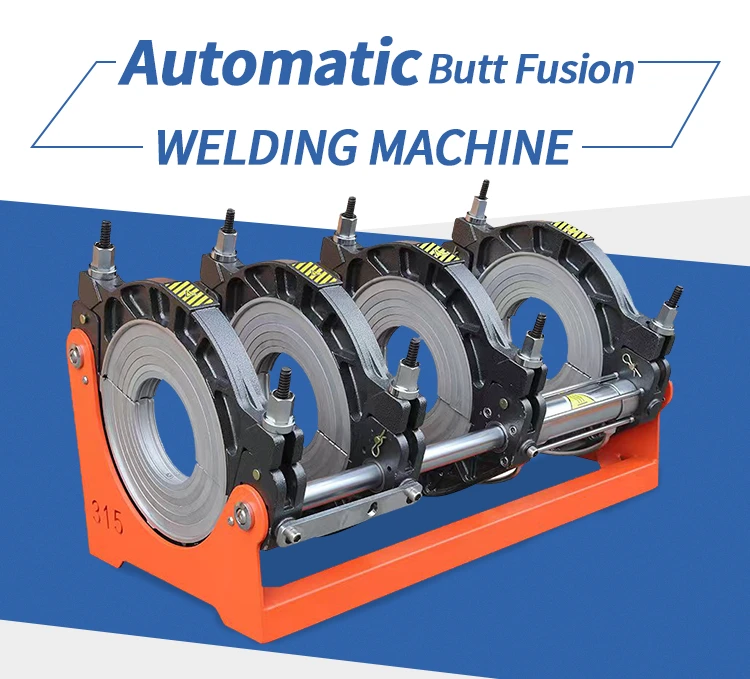847977.webp)
Product introduction of large-diameter high-density polyethylene (HDPE) winding reinforced drainage pipe (KRAH pipe)
Polyethylene resin is used as the main raw material, the thermal winding molding process is adopted, and the polypropylene (PP) single-wall corrugated pipe is used as the auxiliary support structure to form a special structure pipe with high resistance to external pressure. The products used are PR series pipes with smooth inner surface and anisotropic reinforced structure on the outside. The standard length of pipes is 6 meters, and the inner diameter of pipes ranges from 300 to 4000mm.
Process innovation - the superiority of high-density polyethylene winding structure wall pipe (KRAH pipe)
light weight
It is formed by hot winding steel mold, and the quality of the welded seam of the pipe is high.
The pipe connection adopts the electrofusion connection technology of the socket socket, the nozzle connection quality is high, the installation operation speed is fast, and no leakage is ensured.
The system accessories are complete, there are various supporting pipe fittings and inspection wells, which can be assembled into a pipeline system.
The drainage performance is excellent, and the inner wall of the pipe is smooth. Smaller than frictional resistance, the flow rate is faster and the flow rate is larger.
Corrosion resistance, aging resistance, long service life, good wear resistance and toughness and elasticity of pipes, stable chemical properties, corrosion resistance of various acids and alkalis, and a service life of more than 50 years.
The raw materials meet the national environmental protection requirements, the production process is pollution-free, and can be recycled and reused. It is a green and environmentally friendly product.
It has good flexibility and improves the ability of public facilities to resist earthquakes and reduce disasters.
Use computer to carry out product structure design modeling and strength check, and provide users with engineering solutions and products quickly and accurately.
KRAH production process
The polyethylene resin is melted in the main extruder (usually a black material, which provides the aging resistance required by the pipe) and a co-extruder (usually a yellow material, which provides the transparency required by the user to inspect the inner pipe wall). At the nozzle, the material flow to the extruder is divided into two bundles, which respectively flow to one of the dual nozzles, and the flow rate to the dual nozzles is adjusted by a computer. At one nozzle, the black stock (from the main extruder) and the yellow stock (from the co-extruder) melt together to form a two-color flat band at the die. At the other nozzle, the support is wrapped with black tape to form a circular rib. It is usually connected to a rotary die together with ribs to produce a tube.
By changing molds and production procedures, pipes with different diameters and structures can be produced.
KRAH pipe accessories
inspection well
elbow
KRAH pipe connection method
Connection method one
The unique zero-leakage welding technology for the integration of plastic pipes - socket and socket electrothermal fusion welding. The pipe connection adopts the electric fuse pre-embedded in the socket with the same material as the socket electric fusion connection technology. The connection technology is high, and the interface has zero leakage, which ensures the operation of the pipeline system, prolongs the service life of the road, and effectively protects the groundwater. source and soil are not contaminated.
connection method two
Throttling flexible connections for pipes. The creative fluid mechanics throttling principle is adopted, and it has double protection of the same material connection and pad connection; the socket is designed with multiple throttling rings with the function of blocking flow, and the annular ring is bulging in the shape of baleen, and its outer diameter is the same as that of the socket. The inner diameter interference fit makes full use of the flexibility of HDPE to achieve excellent sealing effect. It is the current connection technology that truly achieves excellent zero leakage through simple technology.
565525.webp)
Practicality of KRAH pipe
The rigidity and flexibility of the HDPE pipe ring are good, and the good ring rigidity ensures the reliable passage of heavy loads on the road where the pipeline is laid, and the road surface will not collapse due to the rupture of the pipeline. Its flexibility can overcome the destructive force caused by earthquake, uneven road surface and settlement, and improve the reliability of the facility. Therefore, it is suitable for use in various geological conditions.
There is no need for concrete foundation in use, and it can be excavated, piped down, and backfilled at the same time. Greatly shorten the construction period and reduce construction costs.
Compared with other pipes, the groove width of the trench can be reduced by 20%, which reduces the amount of construction earthwork, saves labor, and reduces construction difficulty and labor intensity. The product is a flexible pipe, and the load-bearing structure is the joint action of the pipe and soil, that is, the "pipe and fill" together form a system load-bearing structure, which improves the deformation resistance of the pipe.
User selection requirements for KRAH pipe
As long as you provide the following conditions, our company will provide you with free static calculation according to the German static calculation standard ATV-A127, so as to select products and matching pipe fittings suitable for engineering conditions
The inner diameter of the pipe becomes the flow rate
Pipeline internal pressure conditions
Design Pavement Load Conditions
Groundwater situation
Covering soil thickness of pipe top
soil type
Humidity of conveying medium
348573.webp)
473.webp)
519.webp)
435.webp)
121.webp)
936.webp)
460.webp)
869.webp)
710.webp)
155.webp)


294.webp)
476.webp)
420.webp)
146.webp)


